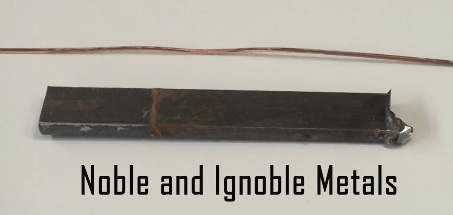We’re using the solution from the last experiment (the iron in what used to be a copper sulfate solution) for part of this experiment. This experiment is tricky to see a color change, which is why we’re going to look at the paper towel for the telltale blue that will indicate the presence of iron.
Please login or register to read the rest of this content.

